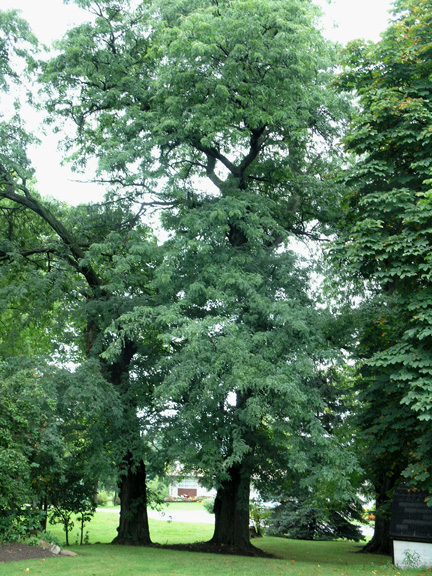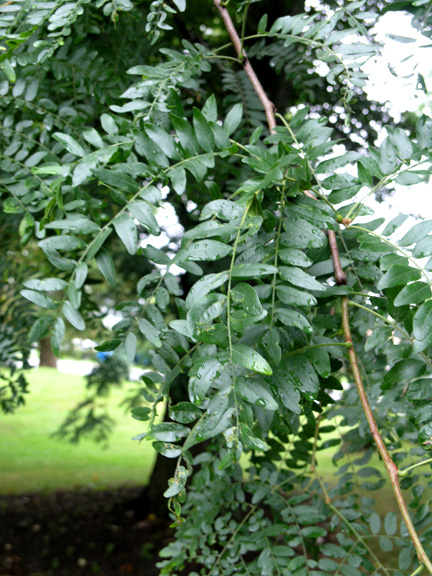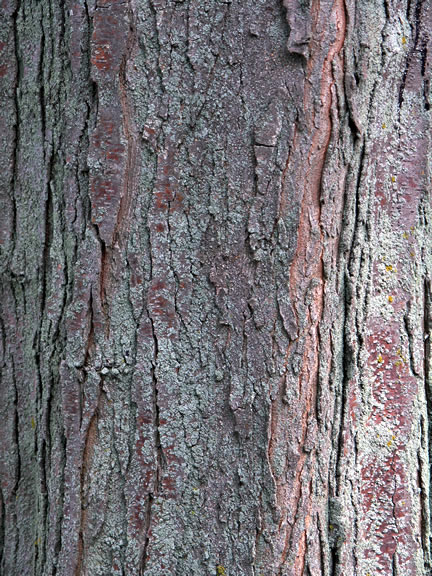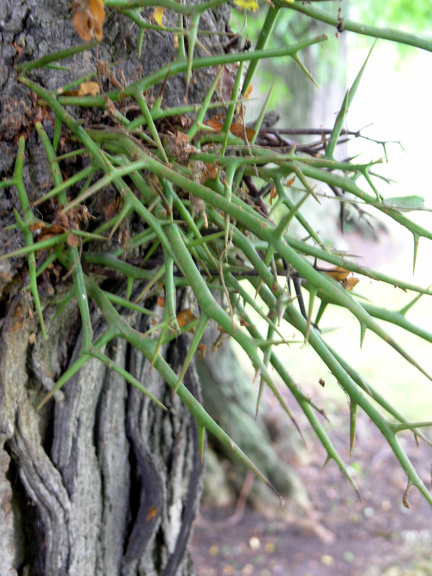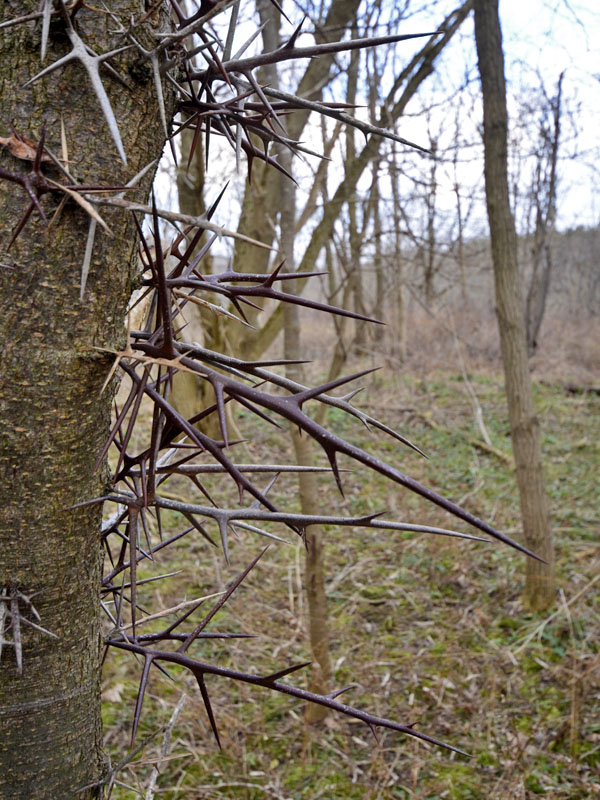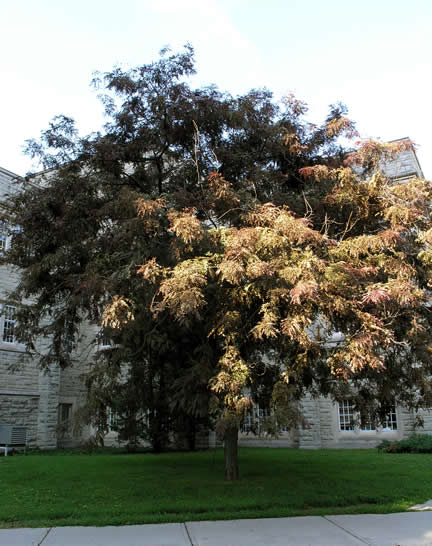| General Description | Honeylocust is a big tree with massive pea-like pods that are flat and swirled. There are bunches of 7 cm thorns coming out of the trunk and stems.
|
| ID Characteristic | Angular spreading medium to large sized tree. Bark has reddish smooth thorns on the trunk and stems. It has the classic legume leaf, which are yellow-green in colour and pinnately compound. |
| Shape | Round, open crowned and can have low-hanging branches if not pruned. |
| Landscape | Thornless varieties have been cultivated and are very common in urban landscapes, along walkways and in parking lots. The natural tree has thorns, so it is not considered a good landscape tree for gardens and public spaces. |
| Propagation | The Honeylocust is propagated by seed. The process is easy once the seed coat has been penetrated. The best time to plant the seed is in the spring. First, place the seed into hot water until it swells. Once swollen take the seeds out and plant immediately into a small pot. Once planted the soil should be moist but not soaked. Once a sprout arises let it “harden off” outside for at least a week, then transplant into the ground.
|
| Cultivation | It grows best in rich, moist soils. The tree can tolerate a variety of soils; well drained, dry, sandy, acidic and high alkaline. This specimen can handle a lot of pollution. |
| Notable Specimens | Toronto Island Park, Toronto, Ontario, Canada. |
| Habitat | Along river edges to open plains and mixed forests. |
| Bark/Stem Description | As a young tree, it will have smooth, brown bark with lenticels and slight peeling. Older trees have scaly ridges and furrows which are covered in reddish, smooth, branched thorns.
|
| Flower/Leaf Bud Description | Often pointed, dark brown and scaled. The buds are arranged in an alternate, zigzag pattern. |
| Leaf Description | The leaflets are oval and pinnately compound, older leaves could be twice pinnate (doubly compound). Leaves on new shoots are alternate on the branch. In the autumn the leaves turn a yellow colour. |
| Flower Description | Both the male and female flowers. they are 5 petaled and are a greenish white colour. |
| Fruit Description | Twisted flat seed pods, grows up to 40 cm long with a light green colour when young. When the pods mature, they turn a reddish brown. The pods have roughly 20 seeds in them. Most pods fall to the ground in the winter. |
